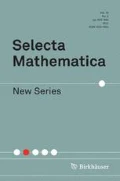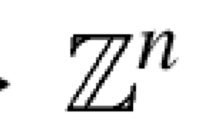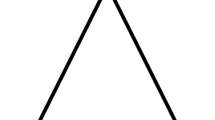Abstract
We prove a conjecture of Etingof and the second author for hypertoric varieties that the Poisson–de Rham homology of a unimodular hypertoric cone is isomorphic to the de Rham cohomology of its hypertoric resolution. More generally, we prove that this conjecture holds for an arbitrary conical variety admitting a symplectic resolution if and only if it holds in degree zero for all normal slices to symplectic leaves. The Poisson–de Rham homology of a Poisson cone inherits a second grading. In the hypertoric case, we compute the resulting 2-variable Poisson–de Rham–Poincaré polynomial and prove that it is equal to a specialization of an enrichment of the Tutte polynomial of a matroid that was introduced by Denham (J Algebra 242(1):160–175, 2001). We also compute this polynomial for S3-varieties of type A in terms of Kostka polynomials, modulo a previous conjecture of the first author, and we give a conjectural answer for nilpotent cones in arbitrary type, which we prove in rank less than or equal to 2.
Similar content being viewed by others
Notes
A precise definition of a conical symplectic resolution is given at the beginning of Sect. 3.
Thanks to the anonymous referee for this observation.
The authors thank Carl Mautner for explaining the following two lemmas and their proofs.
More generally, for any triangulated category with a t-structure, if M is a complex whose cohomology is concentrated in negative degrees and N is a complex whose cohomology is concentrated in nonnegative degrees, then \({\text {Hom}}(M, N) = 0\).
It is not a priori clear that \(L_S\) has regular singularities, though this will follow from Corollary 4.5.
Namikawa works in greater generality, not requiring that X be conical. He also uses an a priori different local system than \(L_S\), notated by \(\mathcal {H}\), and defined only on codimension two leaves. In particular, \(\mathcal {H}\) is defined as a topological local system, unlike \(L_S\). However, it follows from the discussion in [31, §4] that \(L_S\) and \(\mathcal {H}\) have the same monodromy; hence, the underlying topological local system of \(L_S\) is isomorphic to \(\mathcal {H}\). Moreover, under our assumptions, we show that \(L_S\) has regular singularities, so it can be viewed as a topological local system isomorphic to \(\mathcal {H}\).
More precisely, the elements of the image of this orbit under the Killing form isomorphism \(\mathfrak {sl}_r^* \rightarrow \mathfrak {sl}_r\) have this Jordan decomposition.
The factor of 2 is there because \(\mathfrak {h}^*\) sits in degree 2.
References
Alev, J., Lambre, T.: Comparaison de l’homologie de Hochschild et de l’homologie de Poisson pour une déformation des surfaces de Klein, Algebra and operator theory (Tashkent, 1997). Kluwer Academic Publishers, Dordrecht (1998)
Beilinson, A.A., Bernstein, J., Deligne, P.: Faisceaux pervers. In: Analysis and Topology on Singular Spaces, I (Luminy, 1981), Astérisque, vol. 100, pp. 5–171. Soc. Math. France, Paris (1982)
Beauville, A.: Symplectic singularities. Invent. Math. 139(3), 541–549 (2000)
Beynon, W.M., Lusztig, G.: Some numerical results on the characters of exceptional Weyl groups. Math. Proc. Camb. Philos. Soc. 84(3), 417–426 (1978)
Braden, T., Licata, A., Proudfoot, N., Webster, B.: Quantizations of conical symplectic resolutions II: category \(\cal O\) and symplectic duality (2014). arXiv:1407.0964
Borho, W., MacPherson, R.: Partial resolutions of nilpotent varieties. In: Analysis and Topology on Singular Spaces, II, III (Luminy, 1981), Astérisque, vol. 101, pp. 23–74. Soc. Math. France, Paris (1983)
Braden, T., Proudfoot, N., Webster, B.: Quantizations of conical symplectic resolutions I: local and global structure. arXiv:1208.3863
Bellamy, G., Schedler, T.: On the (non)existence of symplectic resolutions for imprimitive symplectic reflection groups. (2013). arXiv:1309.3558
Carter, R.W.: Finite Groups of Lie Type. Wiley Classics Library, Wiley, Chichester (1993). (Conjugacy classes and complex characters, Reprint of the 1985 original, A Wiley-Interscience Publication)
Denham, G.: The combinatorial Laplacian of the Tutte complex. J. Algebra 242(1), 160–175 (2001)
Etingof, P., Gong, S., Pacchiano, A., Ren, Q., Schedler, T.: Computational approaches to Poisson traces associated to finite subgroups of \(\text{ Sp }_{2n}({\mathbb{C}})\). Exp. Math. 21(2), 141–170 (2012)
Etingof, P., Schedler, T.: Coinvariants of Lie algebras of vector fields on algebraic varieties. arXiv:1211.1883
Etingof, P., Schedler, T.: Poisson traces and \(D\)-modules on Poisson varieties. Geom. Funct. Anal. 20(4), 958–987 (2010). (with an appendix by Ivan Losev)
Etingof, P., Schedler, T.: Traces on finite \({\cal W}\)-algebras. Transform. Groups 15(4), 843–850 (2010)
Etingof, P., Schedler, T.: Poisson traces for symmetric powers of symplectic varieties. Int. Math. Res. Not. (2013). doi:10.1093/imrn/rnt031; arXiv:1109.4712
Gan, W.L., Ginzburg, V.: Quantization of Slodowy slices. Int. Math. Res. Not. 2000(5), 243–255 (2002)
Greuel, G.-M.: Der Gauss–Manin–Zusammenhang isolierter Singularitäten von vollständigen Durchschnitten. Math. Ann. 214, 235–266 (1975)
Grothendieck, A.: Représentations linéaires et compactification profinie des groupes discrets. Manuscr. Math. 2, 375–396 (1970)
Hartshorne, R.: Algebraic de Rham cohomology. Manuscr. Math. 7, 125–140 (1972)
Hartshorne, R.: On the De Rham cohomology of algebraic varieties. Inst. Hautes Études Sci. Publ. Math. 45(1), 5–99 (1975)
Hausel, T., Sturmfels, B.: Toric hyperKähler varieties. Doc. Math. 7, 495–534 (2002). (electronic)
Kaledin, D.: Symplectic singularities from the Poisson point of view. J. Reine Angew. Math. 600, 135–156 (2006)
Kaledin, D.: Derived equivalences by quantization. Geom. Funct. Anal. 17(6), 1968–2004 (2008)
Kaledin, D.: Geometry and topology of symplectic resolutions. In: Algebraic Geometry—Seattle 2005. Part 2, Proceedings of Symposium in Pure Mathematics, vol. 80, pp. 595–628. Am. Math. Soc., Providence, RI (2009)
Łojasiewicz, S.: Triangulation of semi-analytic sets. Ann. Scuola Norm. Sup. Pisa (3) 18, 449–474 (1964)
Lusztig, G.: Green polynomials and singularities of unipotent classes. Adv. Math. 42(2), 169–178 (1981)
Lusztig, G.: Characters of Reductive groups over a finite field, Annals of Mathematics Studies, vol. 107. Princeton University Press, Princeton (1984)
Maffei, A.: Quiver varieties of type A. Comment. Math. Helv. 80(1), 1–27 (2005)
Namikawa, Y.: Fundamental groups of symplectic singularities. arXiv:1301.1008
Namikawa, Y.: Flops and Poisson deformations of symplectic varieties. Publ. Res. Inst. Math. Sci. 44(2), 259–314 (2008)
Namikawa, Y.: Poisson deformations of affine symplectic varieties. Duke Math. J. 156(1), 51–85 (2011)
Proudfoot, N.: Hypertoric Poisson homology in degree zero. Algebr. Geom. 2, 1–10 (2014)
Proudfoot, N., Webster, B.: Intersection cohomology of hypertoric varieties. J. Algebr. Geom. 16(1), 39–63 (2007)
Steinberg, R.: A geometric approach to the representations of the full linear group over a Galois field. Trans. Am. Math. Soc. 71, 274–282 (1951)
Webster, B.: Singular blocks of parabolic category \({\cal O}\) and finite W-algebras. J. Pure Appl. Algebra 215(12), 2797–2804 (2011)
Acknowledgments
We would like to thank G. Denham, P. Etingof, C. Mautner, and V. Ostrik for their help with this project. In particular, we thank Mautner for help with Lemmas 3.4 and 3.5 and Etingof for useful discussions about Proposition 2.1 and Conjecture 8.4, and for helpful comments on an earlier version. We are grateful to G. Lusztig for suggesting the formula of Conjecture 8.4 and for introducing us to the material in Remark 8.10. We would also like to thank the anonymous referee for helpful suggestions.
Author information
Authors and Affiliations
Corresponding author
Additional information
Nicholas Proudfoot is supported by NSF grant DMS-0950383.
Travis Schedler is supported by NSF grant DMS-1406553.
Rights and permissions
About this article
Cite this article
Proudfoot, N., Schedler, T. Poisson–de Rham homology of hypertoric varieties and nilpotent cones. Sel. Math. New Ser. 23, 179–202 (2017). https://doi.org/10.1007/s00029-016-0232-3
Published:
Issue Date:
DOI: https://doi.org/10.1007/s00029-016-0232-3




